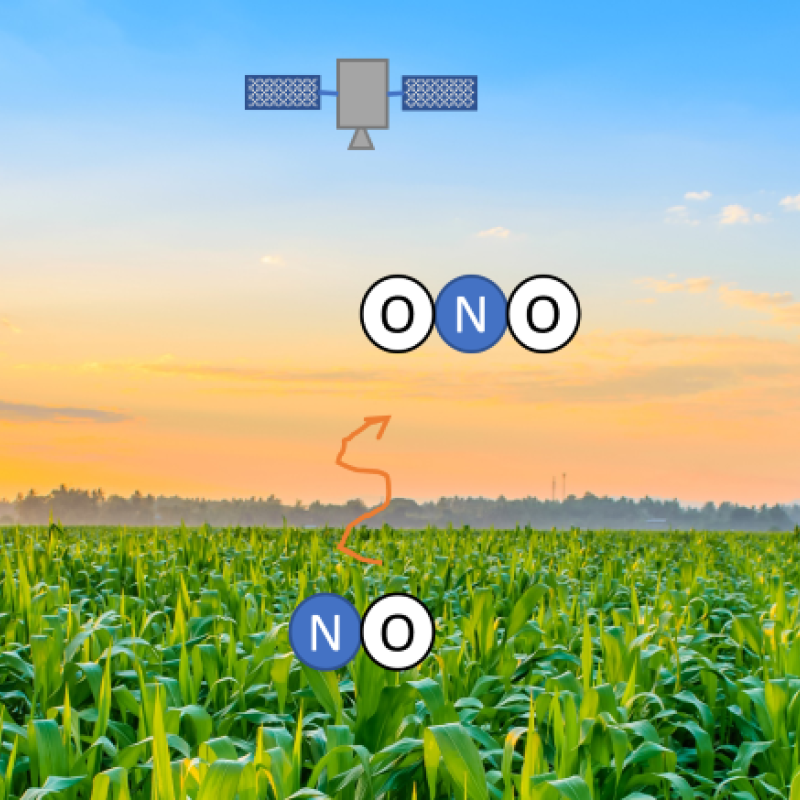Dependence of soil emissions of nitrogen oxides (NOx) on soil moisture

This requires scientific programming skills, e.g., in python.
High amounts of particles or harmful gases in the air damage the health of humans and ecosystems. Ozone, for example, causes damage during respiration – both in animals and plants. The formation of ozone is enhanced when atmospheric levels of pollutants like nitrogen oxides (NOx = NO and NO2) are high. This is well known and around the world, control measures are increasingly being put in place to curb these emissions by industry and traffic. However, in regions where agricultural fields are being heavily fertilized, emissions of NOx by bacteria in the soil can be the largest source of NOx pollution, offsetting effects of pollution measures (e.g., in the North China Plain [Lu et al., 2021]).
Using satellite data of NO2 and precipitation, we have estimated soilNOx emissions in the past [Zörner et al., 2016], but the uncertainty of the results was high due to the characteristics of the used data sets. Since then, two developments improved the possibilities of a soilNOx estimation: The advent of the TROPOMI satellite instrument (http://www.tropomi.eu/), featuring higher quality NO2 data and better spatial resolution. And the strong improvement in satellite-based soil moisture detection by SMOS (https://earth.esa.int/eogateway/missions/smos) and SMAP (https://smap.jpl.nasa.gov/). Recently, soilNOx emissions in the United States were estimated using TROPOMI and SMAP [Huber et al., 2020].

The objective of the study is the estimation of the contribution of soilNOx emissions to the total NOx budget in the North China Plain. You will focus on the periods of corona lockdown, where emissions from transport and industry were strongly reduced. The methodology is comparable to the study by Huber et al. [2020], where data of the satellite instruments TROPOMI (NO2) and SMAP/SMOS (soil moisture) are used to detect “pulses” of NOx emissions linked to changes in soil moisture.
Huber, D. E., Steiner, A. L., & Kort, E. A. (2020). Daily Cropland Soil NOx Emissions Identified by TROPOMI and SMAP. Geophysical Research Letters, 47(22), e2020GL089949. https://doi.org/10.1029/2020GL089949
Lu, X., Ye, X., Zhou, M., Zhao, Y., Weng, H., Kong, H., Li, K., Gao, M., Zheng, B., Lin, J., Zhou, F., Zhang, Q., Wu, D., Zhang, L., & Zhang, Y. (2021). The underappreciated role of agricultural soil nitrogen oxide emissions in ozone pollution regulation in North China. Nature Communications, 12(1), 5021. https://doi.org/10.1038/s41467-021-25147-9
Zörner, J., Penning de Vries, M., Beirle, S., Sihler, H., Veres, P. R., Williams, J., & Wagner, T. (2016). Multi-satellite sensor study on precipitation-induced emission pulses of NOx from soils in semi-arid ecosystems. Atmospheric Chemistry and Physics, 16(14), 9457–9487. https://doi.org/10.5194/acp-16-9457-2016
